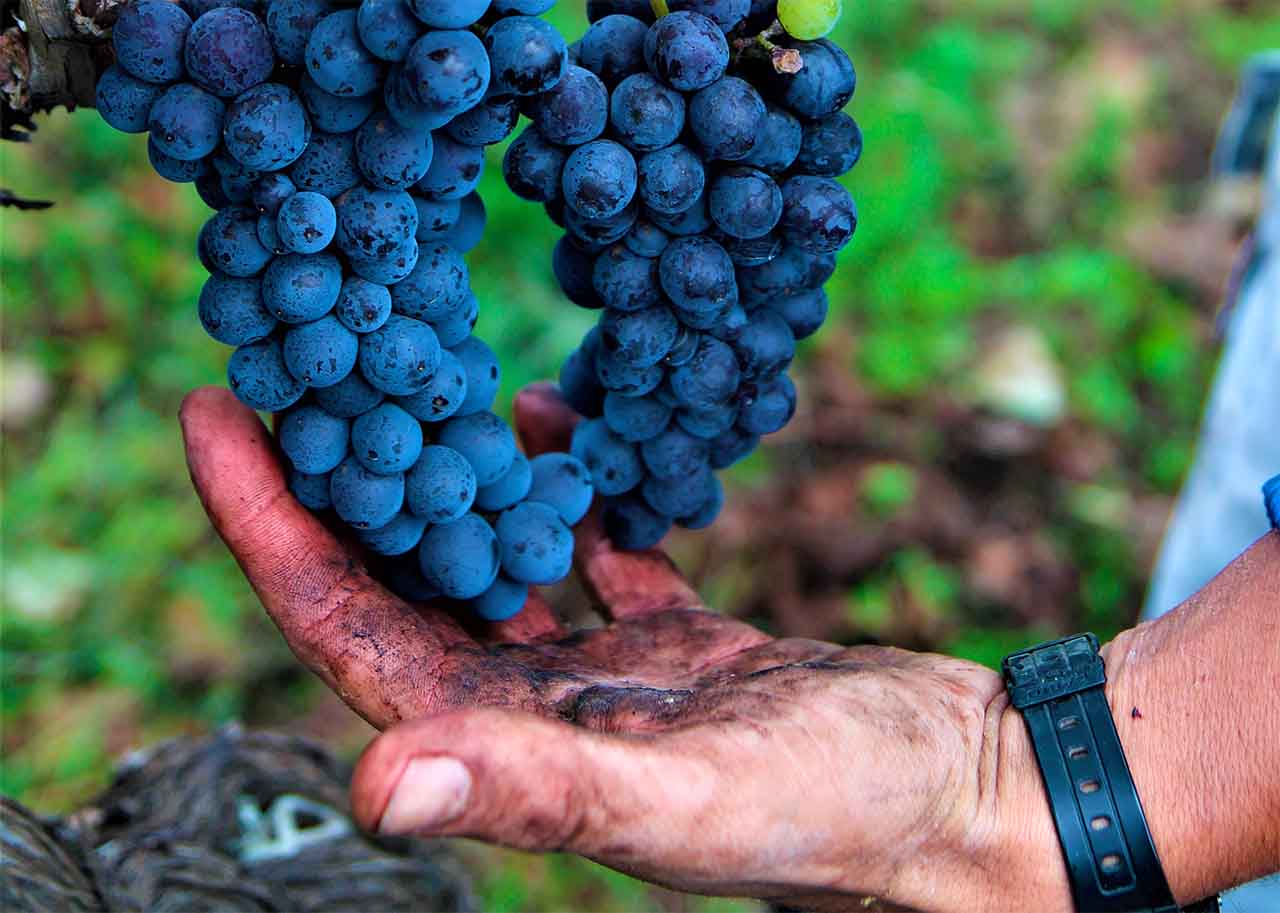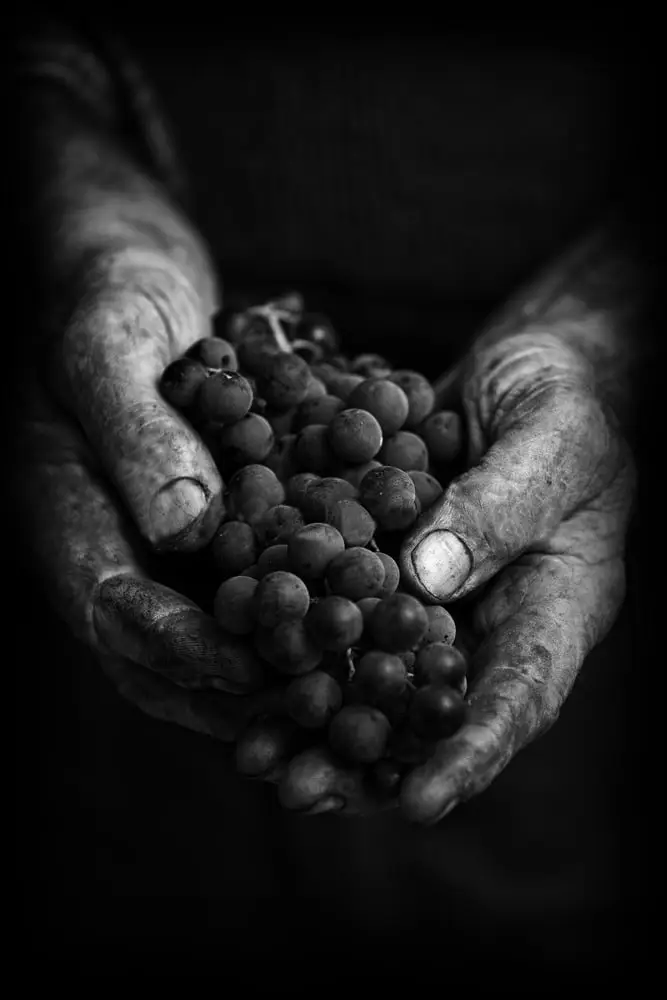Nerello Mascalese is a grape variety that grows predominantly on Mount Etna.
First mentioned in the 18th century, it is the most widespread variety in the Etna area. Its name comes from the Mascali plain — a small town on the eastern slopes of Etna — and from the dark color of its berries, “nero” (black). In the local dialect, it is known as “Niureddu Mascalisi”.
Into the Etna area, especially between the towns of Mascali and Randazzo — where our winery and the largest extension of our contiguous vineyards are located — you can still find ancient bush-trained (alberello) Nerello Mascalese vines. These vines cling to the mountain on black lava stone terraces, without a geometric planting layout. This because, in the past, vine propagation by layering was widely practiced on Etna, a technique in which a vine shoot is buried to produce a new plant. This ancient method has allowed the survival of own-rooted vines, like those in our centuries-old vineyard in Contrada Feudo di Mezzo, located in Passopisciaro, Castiglione di Sicilia’s quarter.
Nerello Mascalese is traditionally cultivated at altitudes between 350 and 1000 meters above sea level, with planting densities reaching up to 9,000 vines per hectare, especially in older vineyards.
The vigor and quality of the Mascalese harvest are highly influenced by training methods, agronomic practices, annual climatic conditions, and the specific cultivation zones.
A crucial factor is the vineyard’s location, particularly the slope and Contrada (district).
Many of these areas are marked by past lava flows from different geological eras, resulting in diverse soil compositions that strongly shape the wine’s characteristics. Like Nebbiolo and Pinot Noir, Nerello Mascalese is highly sensitive to vintage variations and terroir. Few grape varieties in the world possess its extraordinary ability to capture and reflect the nuances of its environment, making it a true expression of its land.
The most renowned cultivation areas include Passopisciaro, Trecastagni, Biancavilla, and Viagrande. However, scientific studies confirm that the northern slope of Etna offers the ideal habitat for Mascalese.
Looking at the grape cluster, it is notable that berries from bush-trained vines tend to be smaller than those from trellised vines. These smaller berries contain a higher concentration of extractive compounds, leading to superior organoleptic quality. This highlights how bush training is not only a traditional practice but also a choice that enhances quality.
Nerello Mascalese is a late-ripening variety, with harvest taking place between the second and third week of October.
In its natural habitat on the northern slope, it produces wines with brilliant hues and a delicate yet defined aromatic profile. These wines are equally rewarding for those new to the Etna volcanic experience and for experts, thanks to their intriguing balance of complexity and drinkability.
This aspect is essential to us, and year after year, we strive to do our best!


